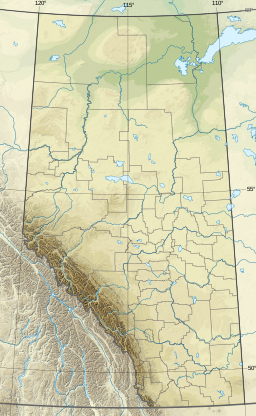
An underwater environment is a environment of, and immersed in, liquid water in a natural or artificial feature, such as an ocean, sea, lake, pond, reservoir, river, canal, or aquifer. Some characteristics of the underwater environment are universal, but many depend on the local situation.

Pykrete is a frozen ice composite, originally made of approximately 14% sawdust or some other form of wood pulp and 86% ice by weight.

Jasper is a specialized municipality and townsite in western Alberta within the Canadian Rockies. The townsite is in the Athabasca River valley and is the commercial centre of Jasper National Park.

Project Habakkuk or Habbakuk was a plan by the British during the Second World War to construct an aircraft carrier out of pykrete, a mixture of wood pulp and ice, for use against German U-boats in the mid-Atlantic, which were beyond the flight range of land-based planes at that time. The plan was to create what would have been the largest ship ever at 600 metres (1,969 ft) long, which would have been much bigger than even USS Enterprise, the largest naval vessel ever, at 342 metres (1,122 ft) long. The idea came from Geoffrey Pyke, who worked for Combined Operations Headquarters. After promising scale tests and the creation of a prototype on Patricia Lake, Jasper National Park, in Alberta, Canada, the project was shelved due to rising costs, added requirements, and the availability of longer-range aircraft and escort carriers which closed the Mid-Atlantic gap that the project was intended to address.

A refrigerator, colloquially fridge, is a commercial and home appliance consisting of a thermally insulated compartment and a heat pump that transfers heat from its inside to its external environment so that its inside is cooled to a temperature below the room temperature. Refrigeration is an essential food storage technique around the world. The low temperature lowers the reproduction rate of bacteria, so the refrigerator reduces the rate of spoilage. A refrigerator maintains a temperature a few degrees above the freezing point of water. The optimal temperature range for perishable food storage is 3 to 5 °C. A freezer is a specialized refrigerator, or portion of a refrigerator, that maintains its contents’ temperature below the freezing point of water. The refrigerator replaced the icebox, which had been a common household appliance for almost a century and a half. The United States Food and Drug Administration recommends that the refrigerator be kept at or below 4 °C (40 °F) and that the freezer be regulated at −18 °C (0 °F).

Pyramid Mountain is a mountain in Jasper National Park, Alberta, Canada, named for its pyramid-like shape. James Hector named the mountain in 1859 due to its appearance from the Athabasca River valley on the eastern side of the peak.

Lake freighters, or lakers, are bulk carrier vessels operating on the Great Lakes of North America. These vessels are traditionally called boats, although classified as ships. Freighters typically have a long, narrow hull, a raised pilothouse, and the engine located at the rear of the ship.

The Fairmont Jasper Park Lodge, formerly and commonly known as Jasper Park Lodge, is a 442-room hotel situated on 700 acre site along Lac Beauvert in Jasper National Park, Alberta, Canada. The hotel was established in 1921 by Canadian National Railway and is one of Canada's grand railway hotels.

Pyramid Lake is a kidney-shaped lake in Jasper National Park, Alberta, Canada. It lies at the foot of Pyramid Mountain, a natural landmark that overlooks the town of Jasper. It has a total area of 1.2 km2 (0.46 sq mi) and discharges in Athabasca River through the 2 km (1.2 mi) long Pyramid Creek.

Bonnington was a sternwheel steamboat that ran on the Arrow Lakes in British Columbia from 1911 to 1931. Bonnington and two sisterships were the largest sternwheelers ever built in British Columbia. Bonnington was partially dismantled in the 1950s, and later sank, making the vessel the largest freshwater wreck site in British Columbia.

Minto was a sternwheel steamboat that ran on the Arrow Lakes in British Columbia from 1898 to 1954. In those years of service, Minto had steamed over 3.2 million kilometers serving the small communities on Arrow Lakes. Minto and her sister Moyie were the last sternwheelers to run in regularly scheduled passenger service in the Pacific Northwest. The "Minto" class of sailing dinghies is named after this vessel.
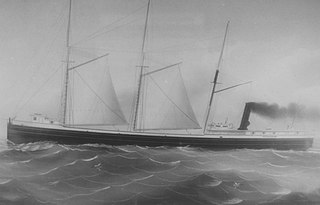
The John M. Osborn was a wooden steam barge that sank in Lake Superior in 1884 with the loss of five lives. The Osborn was just 2 years old when the larger, steel-hulled Alberta, which was called a "steel monster" and "terror of the lakes", rammed her. The wreck of the Osborn was discovered 100 years after her sinking. The wreck was illegally salvaged in the 1980s. Many of Osborn's artifacts became the property of the State of Michigan after they were seized from Great Lakes Shipwreck Museum. The State allows the museum to display the artifacts as a loan. The wreck of the Osborn is now protected by the Whitefish Point Underwater Preserve as part of an underwater museum.

SS M.M. Drake was a wooden steam barge that towed consorts loaded with coal and iron ore on the Great Lakes. She came to the rescue of the crews of at least four foundering vessels in her 19-year career only to meet the same fate in her final rescue attempt. Drake sank in 1901 off Vermilion Point after a rescue attempt of her consort Michigan. Her rudder, anchor, and windlass were illegally removed from her wreck site in the 1980s. They are now the property of the State of Michigan. The rudder is on display as a loan to the Great Lakes Shipwreck Museum and the anchor and windlass are on loan for display to Whitefish Township Community Center. The wreck of Drake is protected as part of an underwater museum in the Whitefish Point Underwater Preserve.
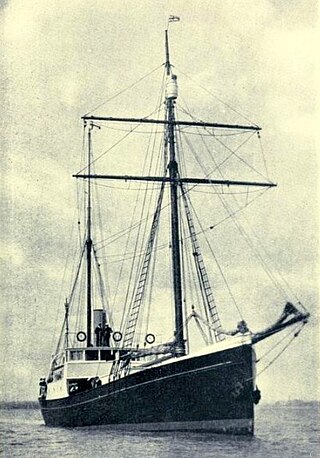
Quest was a low-powered, schooner-rigged steamship that sailed from 1917 until sinking in 1962, best known as the polar exploration vessel of the Shackleton–Rowett Expedition of 1921–1922. It was aboard this vessel that Sir Ernest Shackleton died on 5 January 1922 while in harbour in South Georgia. Prior to and after the Shackleton–Rowett Expedition, Quest operated in commercial service as a seal-hunting vessel or "sealer". Quest was also the primary expedition vessel of the British Arctic Air Route Expedition to the east coast of the island of Greenland in 1930–1931.
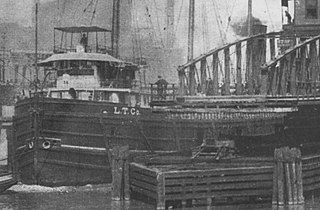
SS Florida was a wooden hulled Great Lakes freighter that served on the Great Lakes of North America from her construction in 1889, to her sinking in May 1897 when she collided with the larger wooden hulled freighter George W. Roby. Her wreck was located by Ed Ellison in July 1994, in 206 feet (63 m) of water almost completely intact, save for her stern.

Thomas Friant was a wooden-hulled ferry that served on the Great Lakes from her construction in 1884 to her sinking in 1924. In January 1924, while gillnetting out of Two Harbors, Minnesota in Lake Superior, she was holed by ice, and sank with no fatalities. In 2004 her wreck was discovered in over 300 feet (91 m) of water in pristine condition. The wreck of Thomas Friant was listed on the National Register of Historic Places in 2019.

SS S.R. Kirby was a composite-hulled bulk carrier that served on the Great Lakes of North America from her construction in 1890 to her sinking in 1916. On May 8, 1916, while heading across Lake Superior with a cargo of iron ore and the steel barge George E. Hartnell in tow, she ran into a storm and sank with the loss of all but two of her 22-man crew off Eagle Harbor, Michigan. For over 102 years the location of S.R. Kirby's wreck remained unknown, until June 2018, when her wreck was discovered by the Great Lakes Shipwreck Historical Society (GLSHS) in 825 feet (251 m) of water, completely broken up.

Muhigan Mountain is a 2,626-metre (8,615 ft) mountain located in Alberta, Canada.

Cairngorm is a 2,610-metre (8,563 ft) mountain located in Alberta, Canada.
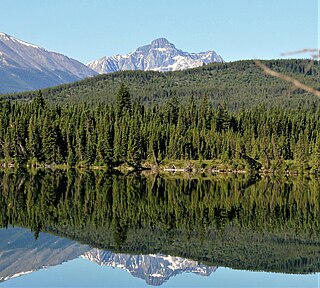
Roche Noire is a 2,920-metre (9,580 ft) mountain located in Alberta, Canada.


